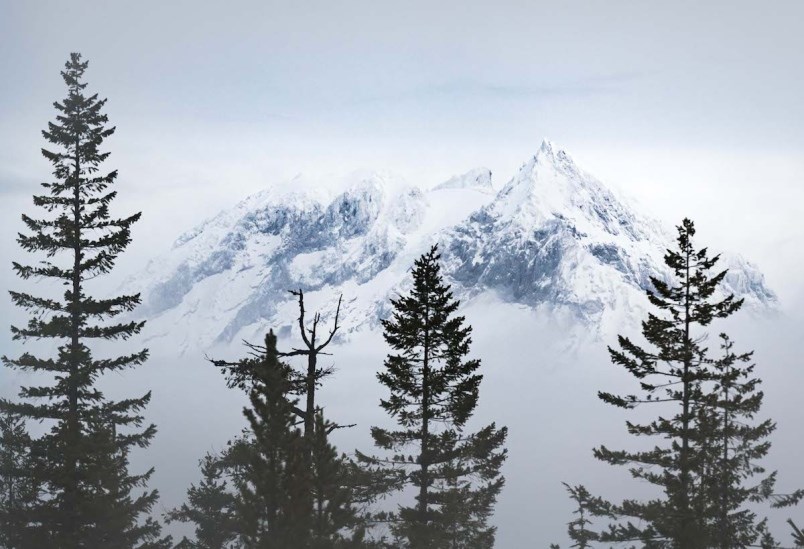High atop Canada’s Western mountain ranges, geologists have been amazed to chance upon the fossils of prehistoric aquatic creatures.
How did remnants of a vast tropical seabed wind up touching the sky?
“The reason there are fossil shells on mountain tops is not because the water was that high,” says retired geologist Bob Turner. “Mountains get pushed up and when they get pushed up they carry with them all the geological materials that are part of the colliding zones.”
One-hundred million years ago, this part of the world was covered by a vast sea. “We’re talking about extraordinarily ancient events,” Turner says. Volcanic activity near Squamish began two million years ago and the most recent eruption on Mt. Garibaldi, the highest volcanic peak in British Columbia, was about 14,000 years ago.
For the people of Squamish Nation, Mt. Garibaldi looms large — albeit with a different name. They know it as Nch’ḵay̓. When the Great Flood covered these lands, the Skwxwú7mesh got into their canoes to escape the rising waters. They tethered their canoes to the top of the mountain until it was safe to return.
From a scientific perspective, Turner says, “it’s not surprising that floods would figure large in Squamish Nation history because they’re a riverbank people. These rivers would be very prone to floods.”
Even in the short European settlement history of this area, floods have had an impact. Turner recalls seeing a photo in the Squamish town library that shows downtown Cleveland Street entirely under water in 1940. Dikes were built to withstand what’s known as a 200-year flood — a flood that might occur once every 200 years — but that doesn’t preclude there being a 500- or 1,000-year flood.
The story of the Great Flood’s rising waters also makes sense weather-wise. While the Cascadia earthquake of January 26, 1700 created a tsunami that submerged the west coast of Vancouver Island, the island’s land mass prevented the tsunami from reaching Vancouver’s North Shore.
“The Squamish story completely fits into what we know about floods, in that they’re largely rainfall driven. Sustained rains can make giant floods,” Turner says.
“In my mind, it’s just a question of how high the waters really rose. Everything else fits in and it makes sense that they would get into their canoes to ride out the floodwaters. It strikes me as a very authentic story.”
What’s not authentic is naming the mountain after an Italian “freedom fighter” from the 1800s.
“It’s just such classic arrogance to slap on the name of someone who didn’t even visit the place, especially since it’s such a prominent feature on the coast,” Turner says of a British ship captain’s decision to name the mountain after Giuseppe Garibaldi on early survey maps. “It would be a real gift to all of us to rename it Nch’ḵay̓.”
Martha Perkins is the North Shore News’ Indigenous and civic affairs reporter. This reporting beat is made possible by the Local Journalism Initiative.




